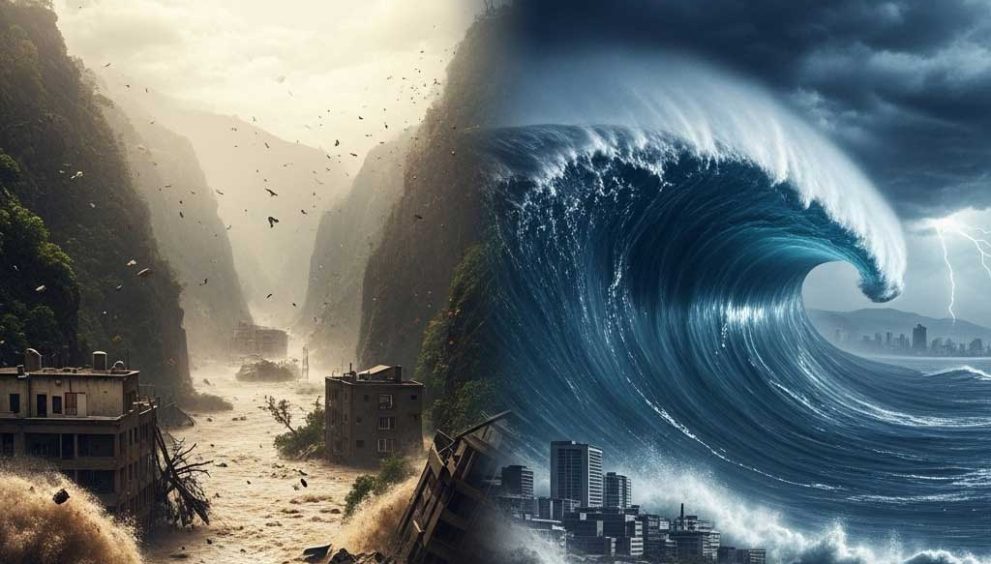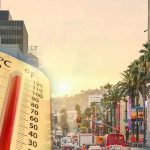Flash Floods and Tsunami Alerts in the USA: Week of July 31, 2025

Overview
This week, the United States faced significant natural disaster threats, including a record-breaking number of flash flood warnings and tsunami alerts triggered by a massive 8.8-magnitude earthquake off Russia’s Kamchatka Peninsula. These events have affected multiple states, prompting evacuations, advisories, and heightened public awareness. Below is a comprehensive summary of the flash floods and tsunami alerts, their impacts, and safety measures for residents.
Flash Flood Warnings
Record-Breaking Flash Flood Alerts
The United States has experienced an unprecedented number of flash flood warnings in 2025, with 3,040 warnings issued from January 1 to July 15, according to data from Iowa State University’s Iowa Environmental Mesonet. This is the highest number since the modern alert system began in 1986, driven by severe storms and extreme rainfall linked to climate change.
Notable Flash Flood Events
- Central Texas (Hill Country Region): In early July, heavy rains caused the Guadalupe River near Kerrville to surge over 20 feet in 90 minutes, resulting in at least 120 deaths. The flooding overwhelmed local infrastructure, with Kerr County officials reporting challenges in coordinating emergency responses.
- New Mexico (Ruidoso): Devastating flash floods in early July killed at least three people in the remote village of Ruidoso, leaving behind significant property damage and debris, including personal items like jewelry and a heart-shaped summer camp sign.
- New York City: Earlier this week, Central Park recorded its second-highest one-hour rainfall total with over 2 inches of rain, triggering flash flood warnings. This event underscores the increasing frequency of extreme rainfall in urban areas.
- Other Affected States: Texas, New Mexico, North Carolina, Illinois, New York, and New Jersey have seen major flooding events in recent weeks, including four 1-in-1,000-year rainfall events in less than a week earlier this month.
Impacts and Infrastructure Concerns
Flash floods have caused significant loss of life, property damage, and strain on infrastructure such as dams, levees, and drainage systems. Experts emphasize the need for robust preparedness to mitigate these risks, as climate change is expected to increase the frequency and intensity of such events.
Tsunami Alerts
Triggering Event: 8.8-Magnitude Earthquake
On July 30, 2025, an 8.8-magnitude earthquake struck off Russia’s Kamchatka Peninsula, one of the strongest quakes ever recorded and the largest since 2011. This megathrust fault event, located approximately 85 miles off the coast, triggered tsunami warnings and advisories across the Pacific, including the United States.
Tsunami Alerts by Region
- Hawaii:
- Alert Level: Initially under a tsunami warning, downgraded to an advisory by the evening of July 30.
- Wave Heights and Arrival Times: The first tsunami waves arrived in Kauai around 7:30 p.m. HST on July 29, with waves reaching 5.7 feet above normal in Maui and 4.9 feet near Hilo on the Big Island. The estimated arrival time for the first wave was 7:17 p.m. HST.
- Impacts: Minor flooding was reported on the Big Island, particularly around the Hilo Seaside Hotel, but no widespread damage or casualties occurred. Evacuations caused significant traffic in Honolulu as residents moved to higher ground.
- Official Response: The Hawaii Emergency Management Agency urged residents to evacuate coastal areas in primary evacuation zones and provided maps for safe routes. Hawaiian Airlines and Alaska Airlines temporarily paused flights but resumed operations by Wednesday morning.
- Alaska:
- Alert Level: Tsunami warnings and advisories were issued for the Aleutian Islands and other coastal areas, downgraded by Wednesday morning.
- Wave Heights and Arrival Times: Waves up to 3 to 5.6 feet were forecasted, with the first waves hitting Shemya at 4:40 p.m. AKDT on July 29.
- Impacts: No significant damage or injuries were reported.
- West Coast (California, Oregon, Washington):
- Alert Level: Tsunami advisories were issued for the entire West Coast, with a warning specifically for Del Norte County, California, downgraded to an advisory by Wednesday morning.
- Wave Heights and Arrival Times:
- California: Crescent City recorded waves up to 3.6 feet, with rapid three-foot water level swings. Tsunami forecasts began at 11:50 p.m. PT on July 29, with advisories in effect for Santa Barbara, San Luis Obispo, Los Angeles, and Ventura counties. Port San Luis experienced rapid and damaging surges.
- Oregon: Forecasts began in Port Orford at 11:40 p.m. PT, with maximum wave heights of 1.1 to 2 feet. Brookings expected waves of 1 to 1.8 feet.
- Washington: Forecasts began in La Push at 11:35 p.m. PT, with Moclips expecting waves of 0.8 to 1.4 feet.
- Impacts: Crescent City, with a history of tsunami damage (e.g., the 2011 harbor destruction), saw no major injuries or damage this time. Residents were advised to stay out of the water and away from beaches due to strong currents and waves.
- U.S. Territories: Guam and American Samoa were under tsunami advisories, which were lifted by Wednesday morning.
Tsunami Warning System and Safety Measures
The U.S. Tsunami Warning System, operated by NOAA’s National Weather Service, includes two 24/7 centers: the National Tsunami Warning Center (NTWC) in Palmer, Alaska, and the Pacific Tsunami Warning Center (PTWC) in Hawaii. These centers monitor seismic activity and issue alerts based on earthquake data and tsunami forecasts.
- Alert Levels:
- Tsunami Warning: Indicates imminent or occurring widespread flooding; evacuation to high ground or inland is recommended.
- Tsunami Advisory: Warns of strong currents or waves dangerous to those near water; residents should avoid beaches and waterways.
- Tsunami Watch: Alerts for possible tsunamis, requiring preparedness.
- Tsunami Information Statement: Indicates no threat or a minor, distant event.
- Natural Warning Signs: Residents should recognize signs like a strong or long earthquake, sudden ocean rise or fall, or a loud roar from the ocean, and move to high ground immediately without waiting for official alerts.
- Safety Recommendations:
- Evacuate to areas 100 feet above sea level or one mile inland.
- Follow local emergency management instructions and use designated evacuation routes.
- Sign up for community warning systems, such as the Emergency Alert System (EAS) or NOAA Weather Radio.
- Prepare a family emergency communication plan and a go bag for quick evacuation.
- Avoid floodwater, which may contain debris or electrical hazards.
Global Context
The Kamchatka earthquake also triggered tsunami alerts across the Pacific, including Japan (waves up to 4 feet), Russia (waves up to 16 feet in Severo-Kurilsk), and countries like Chile, Peru, and French Polynesia. Most alerts were downgraded or canceled by July 31, with no widespread damage reported. The event also caused the Klyuchevskoy volcano in Russia to erupt, adding to regional concerns.
Public Sentiment on X
Posts on X reflect public concern and urgency:
- Users reported tsunami warnings for Hawaii and Alaska, with advisories for the West Coast, urging residents to stay away from beaches.
- Some posts exaggerated wave heights (e.g., claiming up to 3 meters), but official reports confirmed lower impacts.
- Evacuation efforts in Hawaii, particularly Honolulu, were highlighted, with images of traffic as residents sought higher ground.
Note: Information from X posts is inconclusive and should be verified with official sources like tsunami.gov.
Conclusion
The week of July 31, 2025, brought significant natural disaster threats to the United States, with flash floods and tsunami alerts affecting multiple regions. While flash floods caused devastating loss of life and property in states like Texas and New Mexico, the tsunami threat from the Kamchatka earthquake resulted in minor flooding and no major damage in the U.S. Residents are urged to stay vigilant, follow local alerts, and prepare for future events as climate change and seismic activity continue to pose risks.
For the latest updates, visit tsunami.gov for tsunami information and weather.gov for flash flood warnings. Stay safe and prepared.













